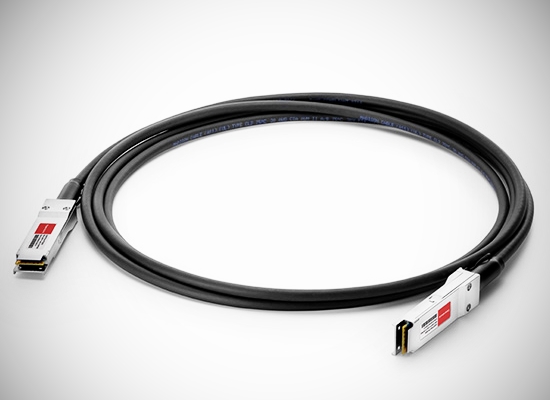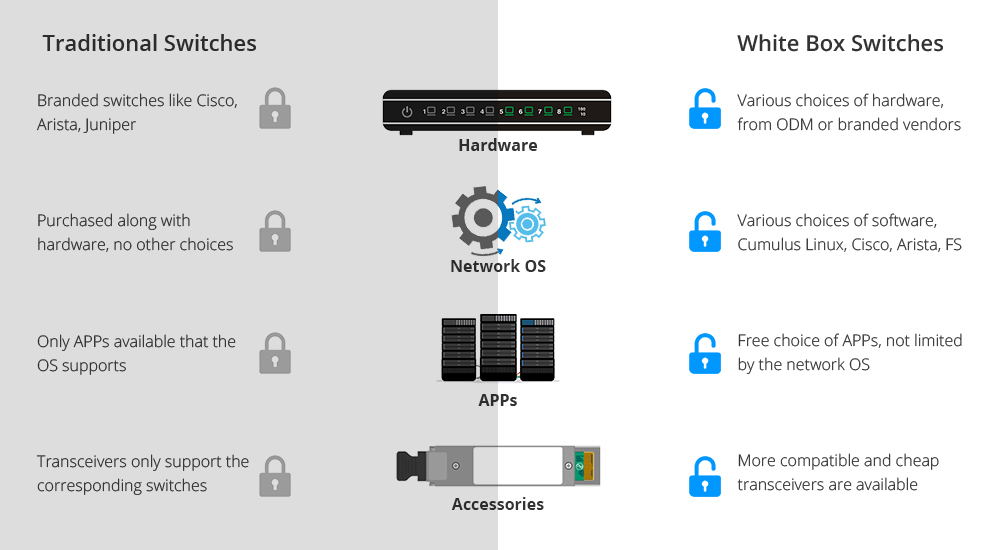DAC is the short name for direct attach cable. Currently, there are many different types of DAC twinax cables on the market such as SFP+ DAC Cable and QSFP DAC Cable. Terminated with transceiver-style connectors, they are designed to be used in the same ports as a typical SFP+ or QSFP transceiver, with no need for adaptors or converters, replacing two optical modules and a connectorized optical fiber with a twinax copper cable assembly. Here in this post, we will mainly focus on 56G QSFP+ to QSFP+ DAC Twinax Cable.
Basics on 56G QSFP+ to QSFP+ DAC Twinax Cable
The 56G QSFP+ to QSFP+ DAC twinax cable, as implied in the name, uses QSFP+ MSA and by using the inexpensive copper twinax cable with QSFP+ connectors on both sides, and provides 56 Gigabit Ethernet connectivity between devices with QSFP+ interfaces,which is suitable for very short distances and offers a highly cost-effective way to establish a 56 Gigabit link connectivity. Unlike 40G (10Gx4) QSFP+ DAC twinax cable, a kind of 40gb ethernet cable, the 56G QSFP+ DAC twinax cable is designed for 56G (14Gx4) InfiniBand FDR interconnecting networking applications such as high-performance computing (HPC), enterprise networking including top-of-rack switching and network storage markets.
The 56G QSFP+ DAC twinax cable is fully comply with QSFP+ Multi-Source Agreement (MSA) standards SFF-8436 and InfiniBand FDR specifications. And it is developed specifically as a cost-effective and lower-power alternative to 56G QSFP+ optics and 56G QSFP+ active optical fiber cable (QSFP+ AOC).
Specification and Features of 56G QSFP+ to QSFP+ DAC Twinax Cable
Now, many suppliers can provide 56G QSFP+ DAC twinax cable for customers. The key features and specification for these products are more ore less the same. Here, we take the generic compatible 56G QSFP+ DAC cable from FS for example.
Specification
Key Features
- Lower cost than 56G QSFP+ optics and active optical cable (AOC)
- Maximum aggregate data rate: 56 Gb/s (4 x 14Gb/s)
- Compliant with Infiniband QDR/DDR/FDR data rates
- Hot-pluggable QSFP+ 38-PIN footprint
- Low Insertion Loss and power consumption
- Operating temperature range: 0 to 70°C
Summary
56G QSFP+ to QSFP+ DAC twinax cables are passive optic cables designed with high performance, low power consumption, long reach interconnect solution supporting 56G Ethernet. For suppliers like FS, their 56G QSFP+ to QSFP+ DAC and other twinax cable offer compatibility with a huge range of vendors, enabling the connectivity customers need within the Top of Rack and End of Row environments.



